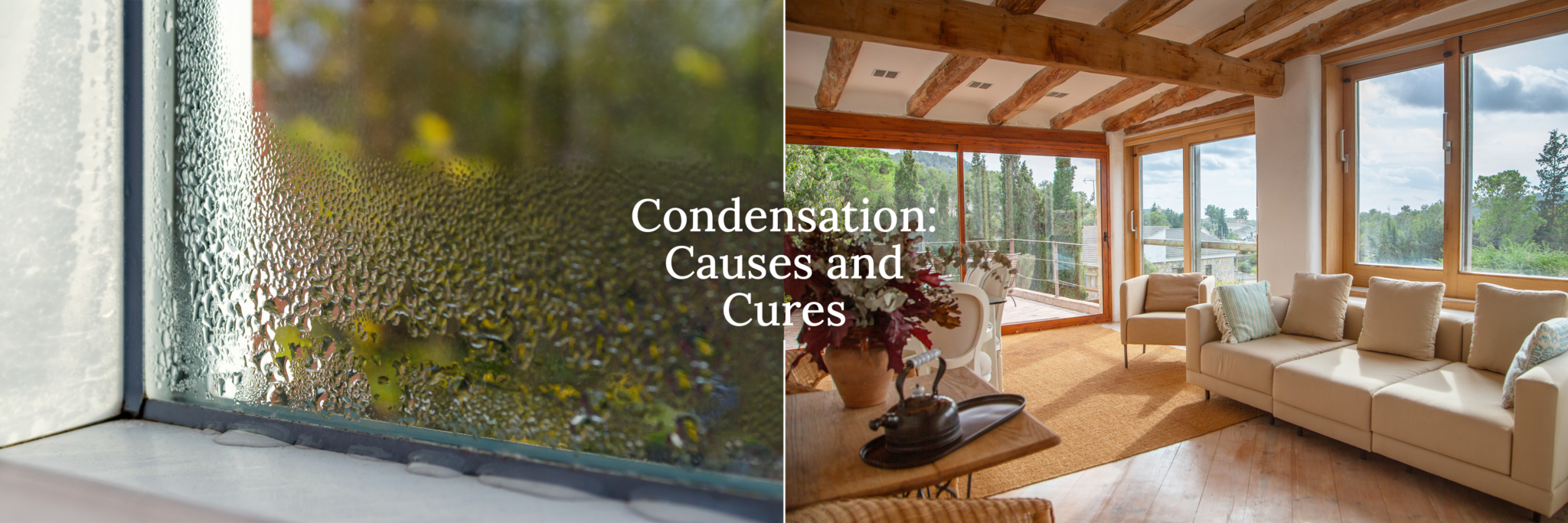Condensation: Causes and Cures
Condensation on your Home

Why does Condensation Occur?
Condensation is a sign of excess humidity (water vapor or moisture in the air) inside the home. Condensation occurs when moist air comes in contact with the colder surface of a window or mirror. Although the surface of the windows may be the first place you notice condensation forming, the windows are not the problem. The windows merely provide a visible sign that excess humidity or moisture is present in the house.
Warm air holds more moisture than cool air. When that warm, moist air comes in contact with a cooler surface, the air cools, and its ability to retain moisture is decreased. The excess moisture in the air is transferred to the cooler surface as condensation.
What Causes Moisture Inside the Home?
Indoor moisture is caused by a variety of factors. Common household activities such as cooking, showering, using the washing machine or dishwasher and other activities that use hot water all add moisture to the air.
Newer homes are often more subject to condensation because they are constructed with better weather tight materials than older homes. Weather stripping, improved insulation, vapor barriers and modern construction techniques are designed to reduce air leakage. But at the same time, these materials and techniques can also seal moisture inside the home. In newer, more weather tight homes, it is important to be aware of humidity levels and to provide adequate ventilation to reduce humidity.
Temporary Condensation
Condensation is often a temporary problem that will correct itself. There are a number of instances during normal everyday routines when temporary condensation can occur, including the following:
- During showering or bathing, cooking, running the dishwasher, and other steam producing activities.
- During the start of each heating season.
- During sharp temperature changes when sudden drops in temperature, especially in the heating season, can cause temporary condensation to form.
- During new construction or remodeling projects. New building materials such as wood, plaster, paint and concrete contain a great deal of moisture. When the heat is turned on and these materials begin to dry out, this moisture will flow into the air inside the home. It will usually dissipate after the first heating season.
Controlling and Reducing Condensation
Good windows can make a difference in reducing condensation. Windows with double pane, insulating glass stay warmer than single pane glass. The double panes of glass provide airspace between the outside and inside glass and aid in controlling condensation by allowing for higher percentages of relative indoor humidity. However, condensation can still occur if the inside humidity is high and there is not enough ventilation.
In addition, factory applied thermal coatings like Low-E (Low Emissivity Coatings) that block the transfer of heat through the glass can further enhance the ability of the glass to resist condensation.
Other simple steps that can be taken to control and reduce the humidity levels in a home include the following:
- Vent clothes dryers and gas burners to the exterior and make sure that vents are connected and clear.
- Use exhaust fans in the kitchen and bath to remove moisture from the air when running hot water.
Open a window for a few minutes in the kitchen, bath and laundry room to air it out. - Keep attic louvers open year round and be sure that crawl spaces are properly ventilated.
- Make sure that humidifiers are correctly set according to the outside temperature.
If interior condensation persists after following these recommendations, contact a qualified heating and air conditioning professional for further help and recommendations.